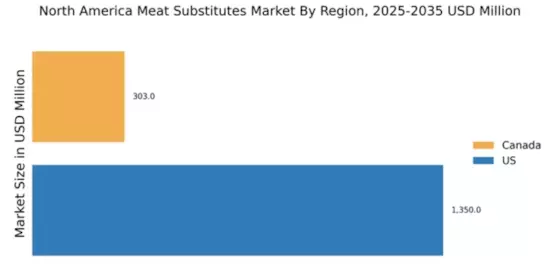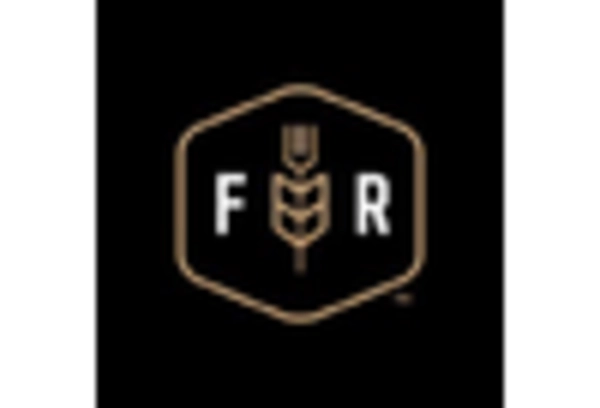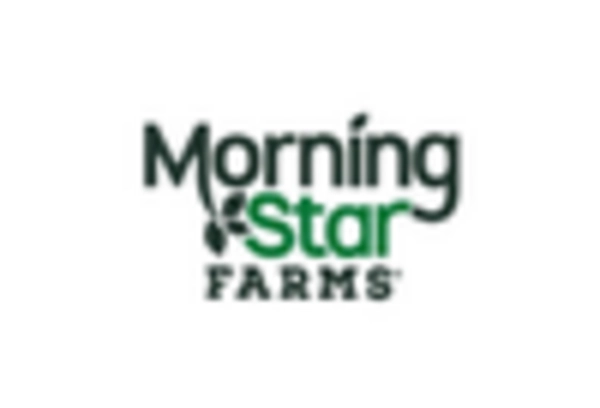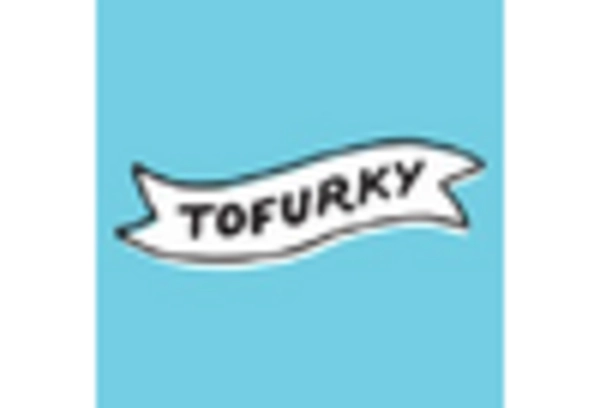Rising Plant-Based Diet Adoption
The increasing adoption of plant-based diets among consumers is a pivotal driver for the meat substitutes market. As more individuals seek to reduce their meat consumption for health and ethical reasons, the demand for meat alternatives has surged. Recent surveys indicate that approximately 30% of North American consumers identify as flexitarians, incorporating more plant-based foods into their diets. This shift is not merely a trend but appears to be a fundamental change in dietary preferences, leading to a projected growth rate of 20% in the meat substitutes market over the next five years. Retailers are responding by expanding their offerings, which further fuels consumer interest and accessibility to these products.
Health Benefits of Meat Alternatives
The perceived health benefits associated with meat alternatives are a crucial driver for the meat substitutes market. Many consumers are increasingly aware of the health risks linked to excessive red and processed meat consumption, such as heart disease and certain cancers. Studies indicate that plant-based diets can lower the risk of these health issues, leading to a growing preference for meat substitutes. In North America, around 40% of consumers are actively seeking healthier food options, which is propelling the demand for meat alternatives. This trend suggests that the meat substitutes market will continue to expand as health-conscious consumers prioritize nutritious and wholesome food choices.
Influence of Social Media and Marketing
The influence of social media and targeted marketing strategies is significantly shaping consumer perceptions and choices within the meat substitutes market. Platforms like Instagram and TikTok have become vital channels for promoting plant-based products, often showcasing appealing recipes and lifestyle choices. This digital engagement appears to resonate particularly well with younger demographics, who are more inclined to experiment with meat alternatives. As a result, brands are increasingly investing in social media campaigns to enhance visibility and attract new customers. The meat substitutes market is likely to benefit from this trend, as effective marketing strategies can drive consumer interest and boost sales.
Environmental Awareness and Climate Change
Growing awareness of environmental issues and climate change is significantly influencing consumer choices, thereby impacting the meat substitutes market. Research suggests that livestock farming contributes nearly 14.5% of global greenhouse gas emissions, prompting consumers to seek more sustainable food options. In North America, approximately 60% of consumers express concern about the environmental impact of their food choices. This heightened awareness is driving a shift towards plant-based alternatives, as they are perceived to have a lower carbon footprint. Consequently, the meat substitutes market is likely to experience accelerated growth as consumers prioritize sustainability in their purchasing decisions.
Technological Advancements in Food Production
Technological advancements in food production are reshaping the meat substitutes market. Innovations such as precision fermentation and cellular agriculture are enabling the development of more sophisticated and appealing meat alternatives. For instance, companies are now able to create products that closely mimic the taste and texture of traditional meat, which could attract a broader consumer base. The market for meat substitutes is projected to reach $10 billion by 2027, driven by these technological innovations. As production methods become more efficient and cost-effective, the availability and affordability of meat substitutes are expected to improve, further stimulating market growth.


















Leave a Comment